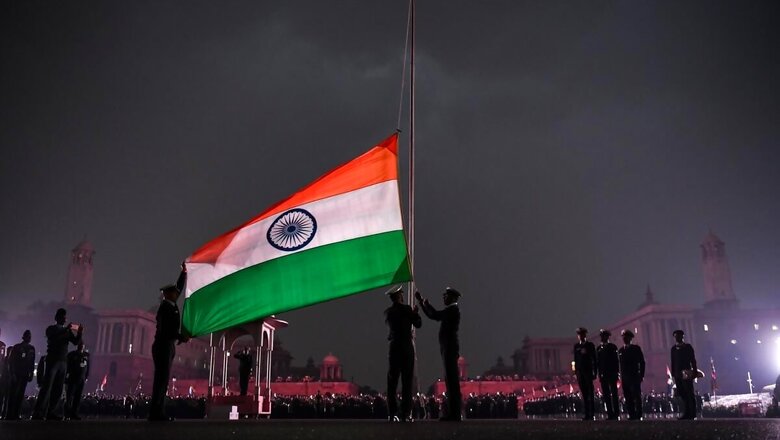
views
January 26, also known as Republic Day, is one of the most significant days of our country’s history when the Indian constitution came into effect in 1950. The day is celebrated with full fervour and enthusiasm as spectacular parade takes place at Janpath, New Delhi and the national flag is hoisted in various parts of the country. While flag hoisting is an important part of this celebration, do you know that the existing tricolour is not the first flag which was designed as the our national flag.
As we celebrate the 72nd Republic Day this year, let’s go through our national flag’s evolution and significance:
The Indian tricolour has undergone a lot of transformation until it was adopted in its existing form on July 22, 1947. The tricoloured Indian National flag was designed by Pingali Venkayya of Macchilipatnam in 1916.
1. However, the first time when it was hoisted as our national flag was on August 7, 1906, in the Parsee Bagan Square (Green Park) in Kolkata. This flag had three horizontal stripes of red, yellow and green.
2. In the same year, 1906, a new design of flag was proposed by Cama, Veer Savarkar and Shyamji Krishna Varma which was exhibited at the socialist conference in Berlin. The flag was tri-coloured with saffron at the top and green at the bottom. The top saffron part also had one lotus and seven stars denoting ‘Saptarishi’. The flag also had the words ‘Vande Mataram’ written on it.
3. In 1917, a new flag was designed by Annie Besant & Lokmanya Tilak during the Home Rule Movement. The flag had five red and four green horizontal strips arranged alternately with a symbol of Union Jack present at the top left corner. It also had a white crescent and star opposite to it on the right corner.
4. In 1921, the flag was redesigned by Vankayya which had colours red and green to represent the two major religious communities in India. However, Mahatma Gandhi, who was in Vijayawada at that time, advised Pingali to add the white colour to the flag to represent all the other communities of India. He also asked him to add ’Spinning Wheel’ or the Charkha to the flag.
5. In 1931, Venkayya redesigned the flag and added saffron colour instead of red at the top. The white and green stripes were kept the same with Gandhiji’s Charkha at the centre of the flag. However, in the final flag which was adopted in 1947, the symbol of the Spinning Wheel or Charkha was replaced by Ashoka’s Dharma Charkha as the emblem on the white part of the flag.
6. The existing flag was adopted by the Constituent Assembly as independent India’s National Flag on July 22, 1947.
In the existing Flag, the colour Saffron at the top represents the strength and courage of the country, the colour white in the middle indicates peace and truth with Dharma Chakra and green at the bottom represents fertility, growth and signifies the fertility, growth and auspiciousness of the land.
Read all the Latest News, Breaking News and Coronavirus News here




















Comments
0 comment